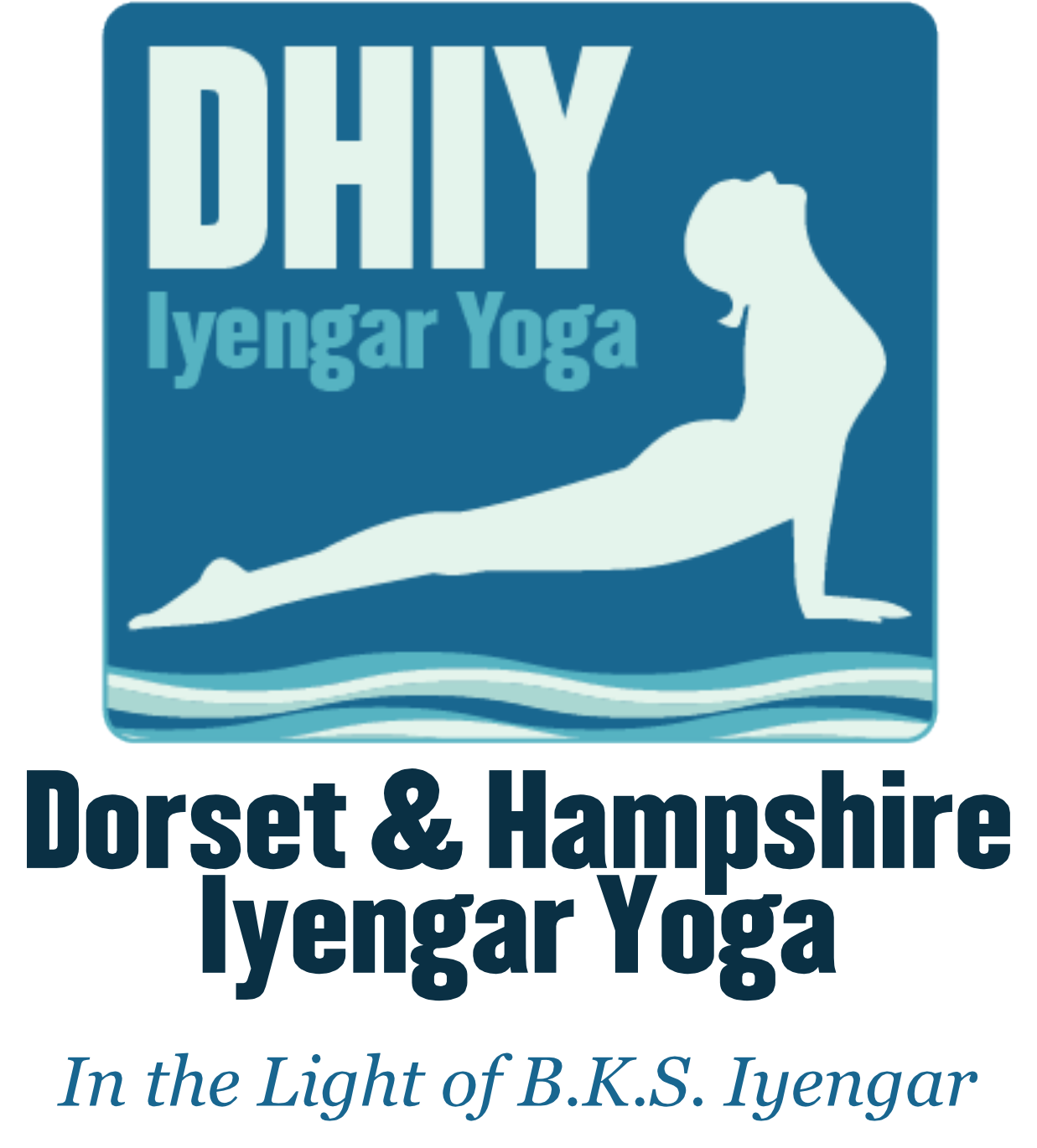In one of Prashant's morning classes we did a standing up Sirsasana, feet together with the heels on a brick, hands clasped behind the head, standing tall, before doing Sirsasana as least five times, up and down, each time concentrating the breath on different parts of the torso, each time we came down I thought we'd finished but no, up again “use your breath” He said too many of us are “asana-ists” and not enough”pranayama-ists”
That same afternoon with Shrineet, who taught in a structured understandable way, we did Sirsasana four times, this time concentrating on the back of the legs in sections and then finally the soles of the feet, where we had to imagine a crystal ball and keep it balanced perfectly steady, should you waver, the crystal ball would become cloudy and fall down. So many headstands in one day, nine in all, but as effortful as that was, for the final one, I felt my crystal ball was safely held aloft and I was calmly stable.
In another class with Abhi, we'd repeated Vrksasana, Ardha Chandrasana and Virahbadrasana 3 a few times, including Ardha Chandrasana with the lower hand in line with the foot and only using the very tips of the fingers, not cupped hands. And then did them all again but on a brick, certainly concentrates the mind.
We were told to approach the more complex poses because if we don't “they'll become extinct” so here are the three I have never even attempted, in the course of different classes, we were offered Vatayanasana (Plate 59 in LOY) Mandalasana (Plates 526-535 in LOY) and Kala Bhairavasana (Plate 375 in LOY) The phrase “going toward” describes my attempts, but pleasantly surprised how far I did manage to travel.
Nawaz gave us a most wonderful pranayama class, simple, clear and achievable. “let the prana spread all over you, like the sun rising in the east touches all in its path” I felt quite emotional afterwards, so needed to thank her in person for the beautiful clarity, she just smiled and said, pointing to the photographs of Guruji and Geetaji, “Don't thank me, thank them”.
On a personal interaction level, it was great to travel with Giulia and Beth and to discover that Semra and Suzie were in the same hotel, all the Bournemouth teachers together. And that Cara (she was, for a time, the membership secretary when I was the treasurer of DHIY in the early days) who used to live in Bournemouth before she returned back home to Texas to study, was also there with her mother. And it was lovely that we were able to introduce ourselves to Garth Maclean, who is coming to Bournemouth in June to do a weekend for us.
I'm glad I went to experience the intensity and as time goes by and I reflect on what I can recall and truly feel, then getting together with my travelling companions to practice and share what we did, I know it has enriched me, and as my teacher Mary says “ you're never the same after you come back from Pune” As teachers, we were told to work cautiously with the students but courageously with ourselves.
So I'll end off by using and combining some of the words, phrases and sentiments Prashant uses when he starts his classes before the invocation, and hope that my few observations will encourage you to practice courageously.
“All of you, settle down, sit straight, close your eyes, bring your palms to the centre of your chest. Look for sanctity, honesty, sagacity, purity, acuity and sensitivity. Find the connection, the integration, the collective dynamic and community of your body, breath and mind. Then silently utter OM”

















